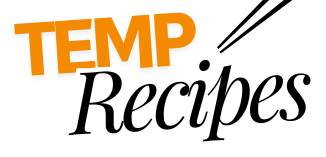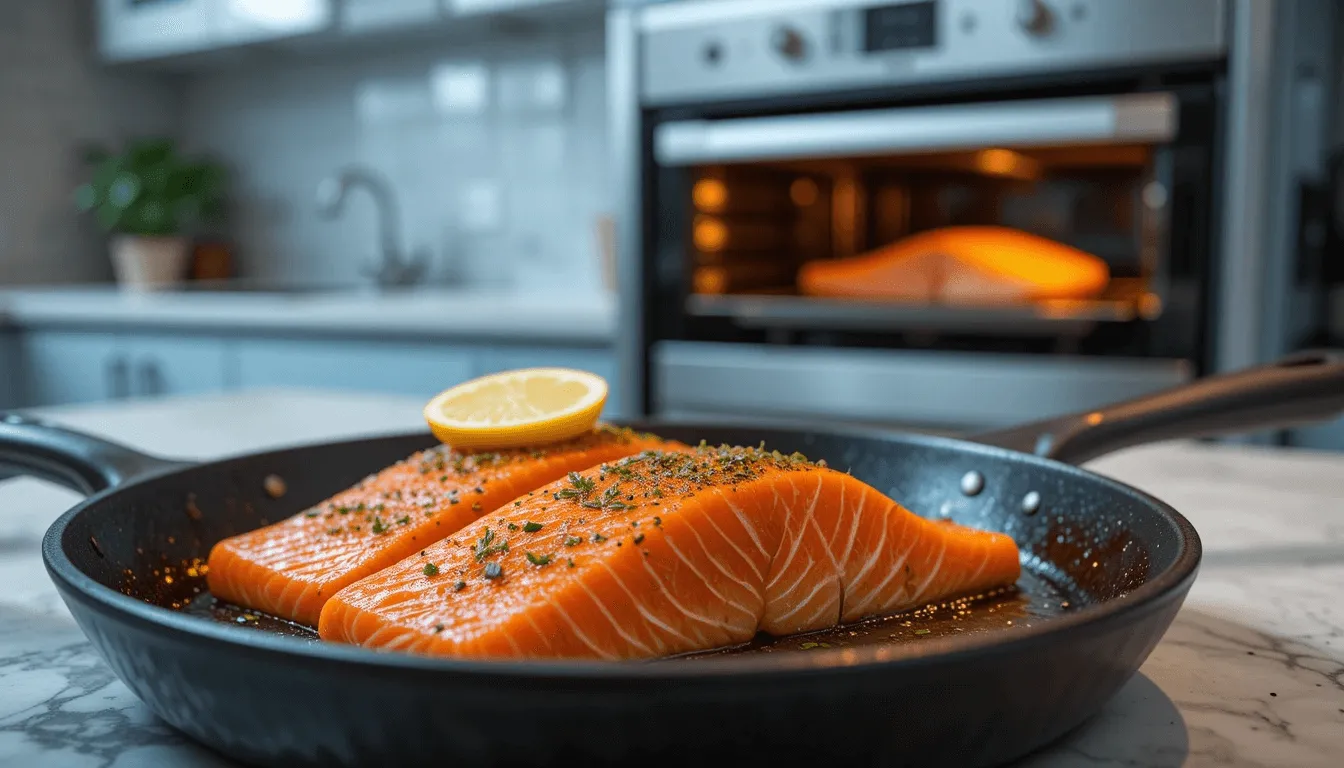When cooking salmon, you might wonder what the best way to cook salmon is. Should you go for pan-searing for a crispy crust or oven-roasting for a moist and flaky texture? Each method has its own benefits, depending on your preference and cooking goals
Thinking about the best way to cook salmon? Pan-searing gives a crispy crust, while oven-roasting makes it moist and flaky. We’ll look into these differences and share tips for a perfect dish. This way, you can pick the best method for your next salmon meal.
Table of contents
Understanding Different Salmon Cuts and Their Ideal Cooking Methods
Choosing the right salmon cut is key to a great dish. Whether you cook it in a pan or oven, the cut matters. Salmon comes in various thicknesses, like fillets, steaks, and portions.
The cut’s thickness changes how you cook it. Thin cuts are best for pan-searing because they cook fast. Thicker cuts need oven-roasting, as they take longer to cook. Understanding the different types of salmon cuts available helps you pick the right one.
Some popular salmon cuts include:
- Fillets: thin cuts, ideal for pan-searing
- Steaks: thicker cuts, suitable for oven-roasting
- Portions: smaller cuts, perfect for individual servings
Choosing the right salmon cut ensures a delicious dish. Whether you like the crispy pan-seared salmon or the tender oven-roasted salmon, picking the right cut is essential.
Essential Preparation Steps Before Cooking Salmon
Preparation is key when cooking salmon. It ensures a delicious and evenly cooked dish. Start by rinsing the salmon under cold water to remove impurities. Then, pat it dry with paper towels to prevent excess moisture.
Season the salmon with salt, pepper, and herbs or spices. This adds flavor and aroma to your dish.
To cook salmon evenly, bring it to room temperature before cooking. This simple step can greatly improve the final result. Marinating the salmon before cooking can also add extra flavor and tenderize it.
Here are some essential steps to follow when preparing salmon for cooking:
- Rinse the salmon under cold water to remove any impurities
- Pat the salmon dry with paper towels to prevent excess moisture
- Season the salmon with salt, pepper, and any other desired herbs or spices
- Bring the salmon to room temperature before cooking
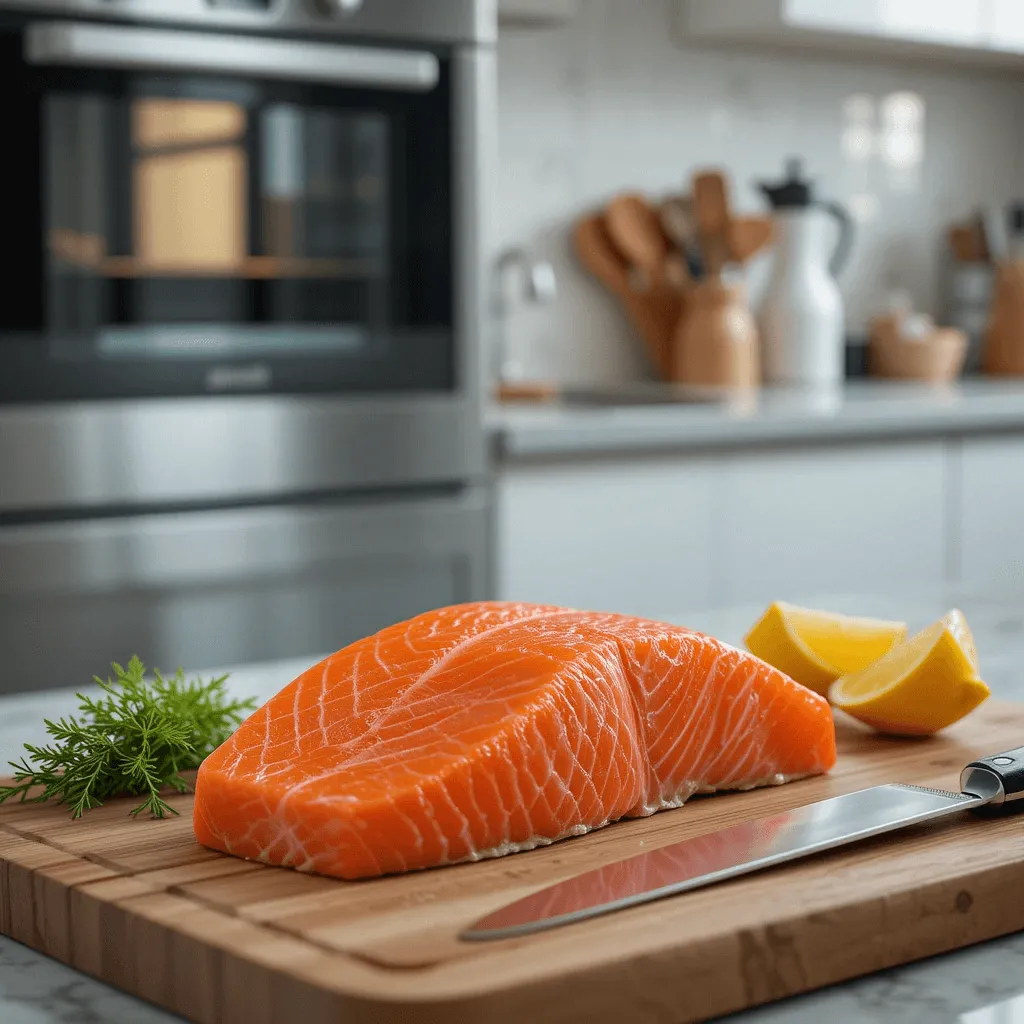
By following these simple steps, you’ll be well on your way to creating a mouth-watering dish. Whether you’re a seasoned chef or a beginner, proper preparation is essential. It ensures your salmon is sure to impress.
What is the Best Way to Cook Salmon: Pan or Oven?
When cooking salmon, you can choose between pan-searing and oven-roasting. Each method has its own benefits and drawbacks. To find out what is the best way to cook salmon pan or oven, let’s look at the key factors.
Cooking time is a big deal. Pan-searing takes about 3-4 minutes per side. Oven-roasting, on the other hand, takes 12-15 minutes. This difference can affect the salmon’s texture and taste.
Comparing Cooking Times
- Pan-searing: 3-4 minutes per side
- Oven-roasting: 12-15 minutes
Texture and flavor are also key. Pan-searing gives a crispy crust. Oven-roasting cooks more evenly. Your choice between pan or oven depends on what you like best.
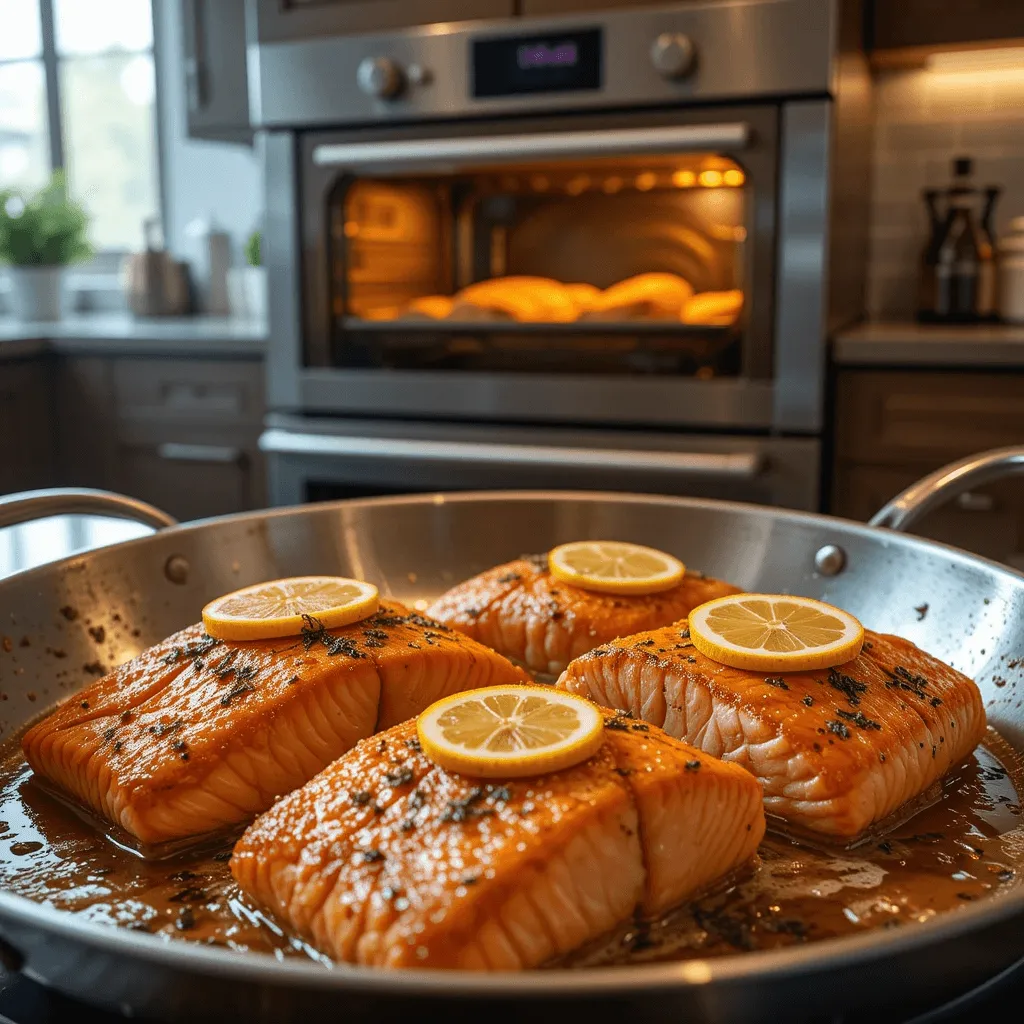
Texture Differences Between Methods
The salmon’s texture changes with the cooking method. Pan-searing makes it crispy on the outside. Oven-roasting makes it tender and flaky.
Mastering the Pan-Seared Salmon Technique
When cooking salmon, pan-searing is a top choice. It makes the outside crispy and the inside tender. You’ll need a skillet, spatula, plate, and a bit of oil to prevent sticking.
To get a perfect crust, don’t move the salmon too much. This helps it sear well. Pan-searing salmon can be tricky, but with a few steps, you’ll make a dish that wows everyone.
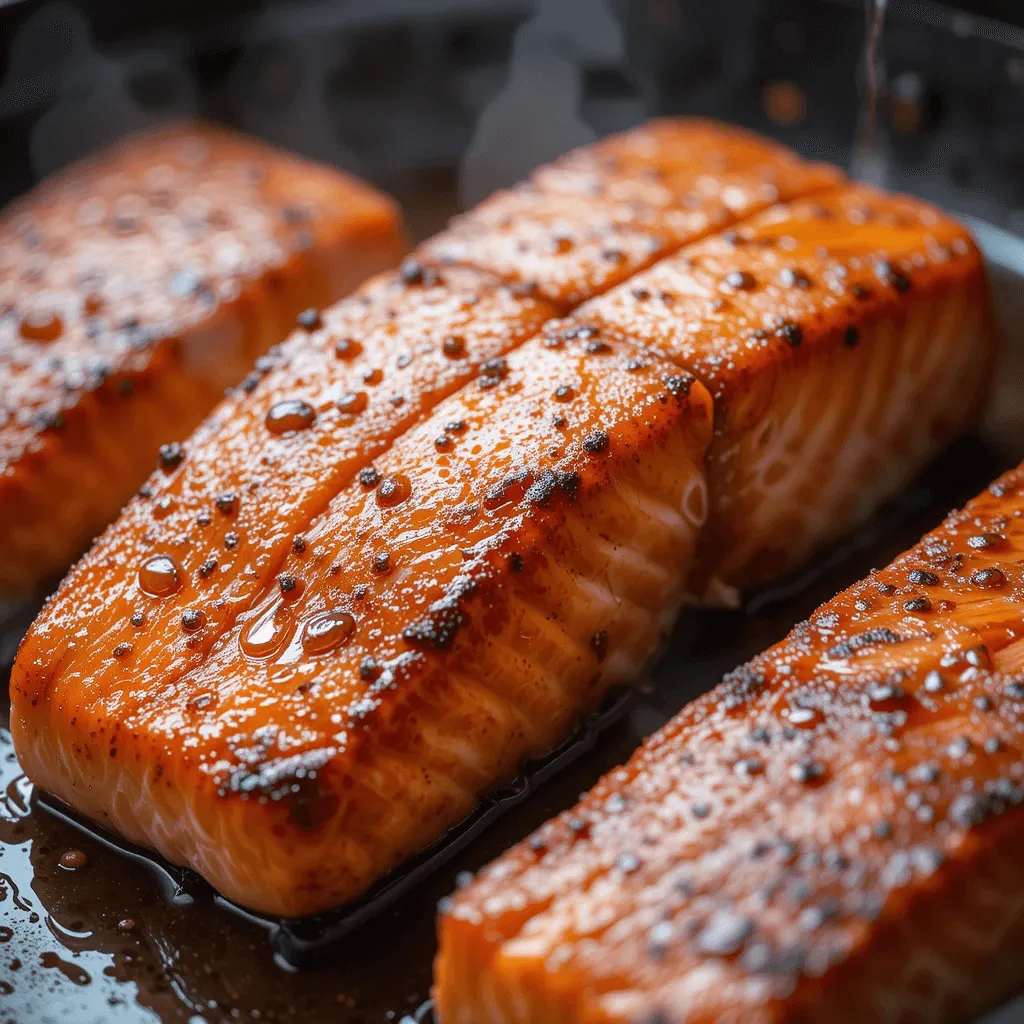
Required Equipment for Pan-Searing
- Skillet
- Spitula
- Plate
- Oil
Step-by-Step Pan-Searing Process
- Heat the skillet over medium-high heat
- Add a small amount of oil to the skillet
- Place the salmon in the skillet, skin side up
- Cook for 3-4 minutes, or until the skin is crispy and golden brown
- Flip the salmon over and cook for an additional 3-4 minutes, or until it is cooked through
By following these steps, you can master pan-seared salmon. It’s a great skill for any cook, whether you’re new or experienced. Pan-searing salmon is a fantastic way to enjoy this popular fish.
The Art of Oven-Roasted Salmon
Oven-roasting salmon is a favorite way to cook it. It ensures even cooking. To start, preheat your oven to 400°F (200°C). Place the salmon on a baking sheet covered with parchment paper.
The cooking time varies based on the salmon’s thickness. It usually takes 12-15 minutes. Oven-roasting salmon is great because it’s low-maintenance. You just put the salmon in the oven and wait. This method also keeps the salmon’s nutrients and flavor intact.
Some benefits of oven-roasting salmon include:
- Easy to prepare and cook
- Even cooking temperature
- Preserves nutrients and flavor
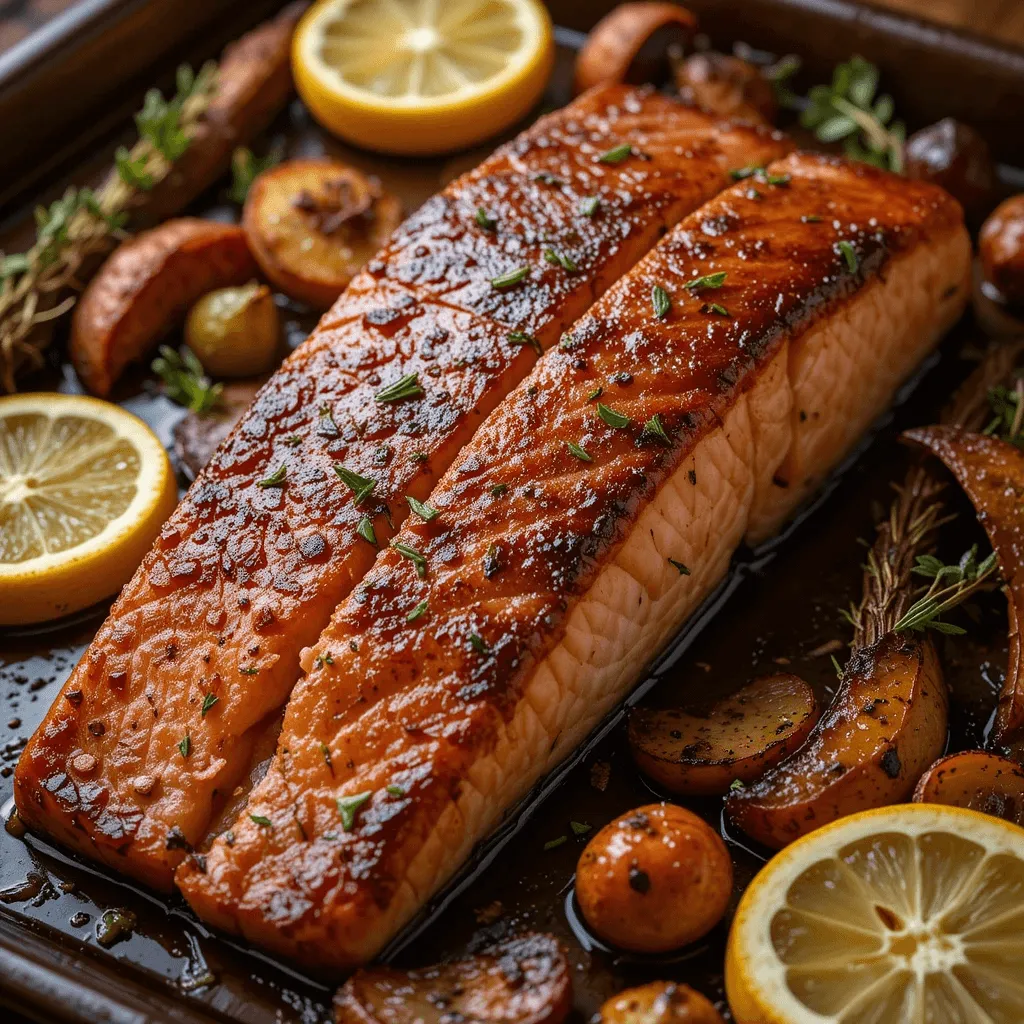
Oven-roasting salmon is a fantastic way to enjoy this healthy fish. It’s quick, easy, and delicious. By following these steps, you can make a tasty oven-roasted salmon dish that everyone will love.
Temperature Guidelines for Perfect Salmon
Cooking salmon right is key to avoid foodborne illnesses and to make a tasty meal. You need a food thermometer to check the salmon’s internal temperature. This is very important.
The perfect internal temperature for salmon is about 145°F (63°C). You can also check if it’s done by inserting a fork or knife into the thickest part. If it slides in easily, it’s cooked. Cooking salmon to perfection needs focus and practice, but these tips will help you.
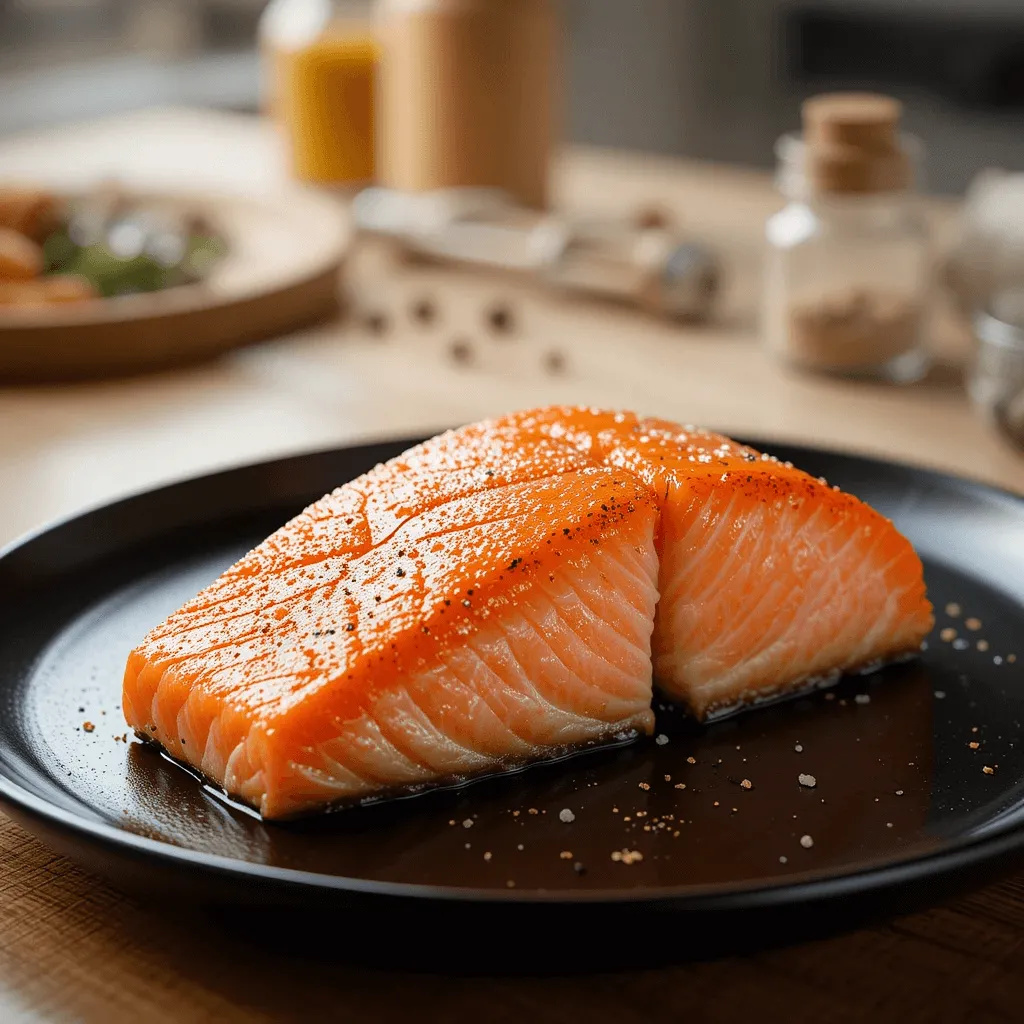
- Put the thermometer into the thickest part of the salmon, avoiding bones or fat.
- Wait a few seconds until the temperature is steady.
- Compare the reading to the recommended 145°F (63°C).
By following these temperature guidelines and using a food thermometer, you’ll cook salmon perfectly every time. This ensures a safe and enjoyable meal.
Seasoning and Marinade Options for Each Method
Salmon cooking methods offer a wide range of seasonings and marinades. For pan-searing, a simple mix of salt, pepper, and lemon juice works well. Or, you can try a soy-ginger marinade for a deeper flavor. This marinade combines soy sauce, ginger, and garlic for a savory taste.
Oven-roasting allows for similar seasonings or a Mediterranean-style marinade. This marinade includes olive oil, garlic, and herbs. It adds a bright, refreshing flavor, using lemon juice, olive oil, and oregano. Some popular options include:
- Lemon pepper
- Dill and capers
- Asian-style marinade with soy sauce and ginger
- Mediterranean-style marinade with olive oil and herbs
These are just a few of the many seasonings and marinades for salmon. By mixing different ingredients, you can find the perfect flavor.
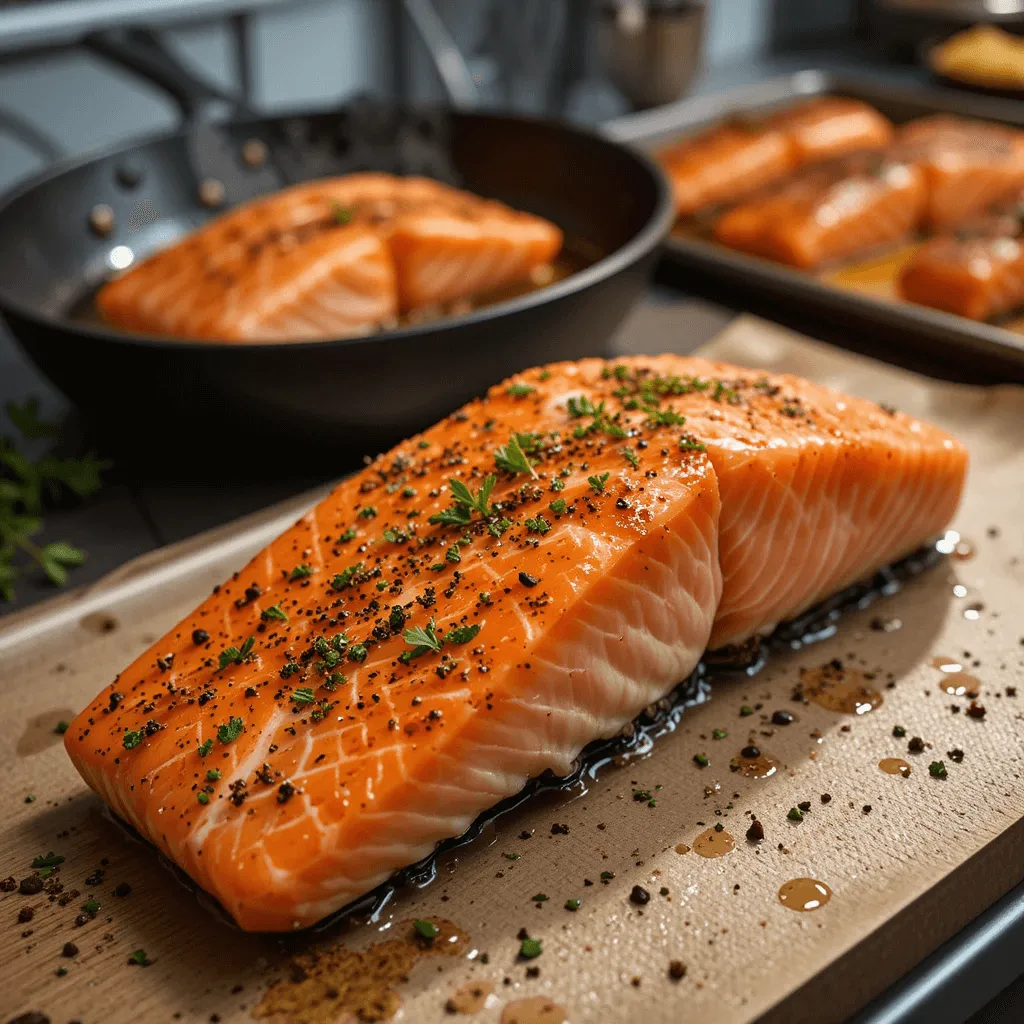
Remember, experimenting is key to great flavor in salmon cooking. With practice, you’ll master salmon cooking and impress everyone with your skills.
Common Mistakes to Avoid When Cooking Salmon
Cooking salmon can be tricky. It’s easy to make mistakes that ruin the dish. To get a moist and tasty salmon, you need to know what to avoid. One big mistake is overcooking, which makes the fish dry and tough.
When you pan-sear, the high heat cooks the outside too fast. This leaves the inside raw. It’s important to cook the salmon just right.
Another mistake is not checking the fish’s internal temperature. This can lead to undercooked or overcooked salmon. Using a thermometer ensures the salmon reaches a safe 145°F.
Some common mistakes in cooking salmon include:
- Not patting the salmon dry before cooking, which can lead to a steamed texture
- Not using enough oil in the pan, which can cause the salmon to stick and become damaged
- Not cooking the salmon at the right temperature, which can affect the texture and flavor
By avoiding these mistakes, you can make a delicious and moist salmon dish. Whether you’re pan-searing or oven-roasting, a few simple tips can help you get it right every time.
Special Considerations for Wild vs. Farm-Raised Salmon
Choosing the right cooking method for salmon depends on its type. Wild-caught salmon is leaner, while farm-raised is fattier. This affects how you cook it, with fattier salmon being better for oven-roasting. Understanding these differences is key to a perfect dish.
When cooking, remember wild-caught salmon cooks faster because it’s leaner. Farm-raised salmon takes a bit longer to cook through.
Cooking Time Adjustments
- Wild-caught salmon: shorter cooking time due to leaner nature
- Farm-raised salmon: slightly longer cooking time due to higher fat content
Fat Content Differences
The fat content of salmon greatly influences cooking methods. Fattier salmon is great for oven-roasting, as high heat crisps the outside. Leaner salmon is better for pan-searing, to keep its delicate flavor and texture. By considering these, you can pick the best method for your salmon and make a dish that tastes like it came from a restaurant.
Best Scenarios for Each Cooking Method
Choosing the right cooking method for salmon depends on your taste and the salmon type. Pan-searing gives a crispy outside and a soft inside. It’s great for those who love a crunchy texture. Oven-roasting, on the other hand, cooks evenly and requires little effort, perfect for easy meals.
Think about the salmon type and your desired result when choosing a method. Thicker salmon cuts are better for oven-roasting to ensure they’re fully cooked. But, if you want a crispy crust, pan-searing is the best choice. It’s all about matching the method to your needs.
Here are some common uses for each method:
- Pan-searing is perfect for romantic dinners or special occasions to impress guests with a crispy crust.
- Oven-roasting is ideal for weeknight dinners or meal prep, as it’s easy and healthy.
Your choice of cooking method should match your taste and the salmon type. Knowing the strengths of each method helps you make the best choice. This way, you’ll always get a delicious dish.
Conclusion: Choosing Your Ideal Salmon Cooking Method
The best way to cook salmon depends on what you like and the salmon’s type. Knowing the different cooking methods and how to season can help. You can make delicious salmon dishes that you’ll love.
Whether you like the crispy crust of pan-seared salmon or the softness of oven-roasted, there’s a method for you. Each technique has its own charm. You’ll find the one that suits you best.
Keep trying different ways to cook salmon. Watch the thickness, fat, and how done it is. With practice, you’ll make salmon as good as a restaurant’s. Next time you want salmon, use this guide to pick the best method for you.
FAQ
What is the best way to cook salmon – pan or oven?
Cooking salmon can be done in two ways: pan-searing or oven-roasting. Pan-searing gives a crispy crust. Oven-roasting cooks more evenly.
What are the different types of salmon cuts and how do they affect the cooking method?
Salmon comes in different cuts like fillets, steaks, and portions. Thinner cuts are best for pan-searing. Thicker cuts are better for oven-roasting.
What are the essential preparation steps before cooking salmon?
Before cooking, rinse the salmon under cold water and pat it dry. Season it with salt, pepper, and herbs. Make sure it’s at room temperature for even cooking.
How do the cooking times and texture differ between pan-searing and oven-roasting salmon?
Pan-searing takes 3-4 minutes per side for a crispy crust. Oven-roasting takes 12-15 minutes for even cooking. Pan-searing makes the inside tender and the outside crispy. Oven-roasting makes the fish moist and evenly cooked.
What equipment is needed for pan-searing salmon, and what are the key steps in the process?
You need a skillet, spatula, and plate for pan-searing. Heat the skillet over medium-high, add oil, and place the salmon. Don’t move it too much to get a good sear.
What are the steps for oven-roasting salmon?
Preheat your oven to 400°F (200°C). Place the salmon on a baking sheet lined with parchment paper. Cook for 12-15 minutes, depending on the thickness.
What is the ideal internal temperature for cooked salmon?
Cook salmon to an internal temperature of 145°F (63°C). Use a food thermometer to check. You can also check by inserting a fork or knife into the thickest part.
What are some seasoning and marinade options for pan-searing and oven-roasting salmon?
For pan-searing, try salt, pepper, and lemon juice or a soy-ginger marinade. For oven-roasting, use a Mediterranean-style marinade with olive oil, garlic, and herbs.
What are some common mistakes to avoid when cooking salmon?
Avoid overcooking when pan-searing to prevent dryness. Use a thermometer to ensure the right temperature. When oven-roasting, undercooking can be a problem. Use a thermometer and cook for the recommended time.
How do cooking considerations differ for wild-caught vs. farm-raised salmon?
Wild-caught salmon is leaner, while farm-raised is fattier. Cooking times may vary. Fattier salmon is better for oven-roasting.
What are the best scenarios for using each cooking method – pan-searing or oven-roasting?
Pan-searing is great for a crispy crust and tender inside. Oven-roasting is better for even cooking and a hands-off approach. Choose based on your preference and the salmon type.
